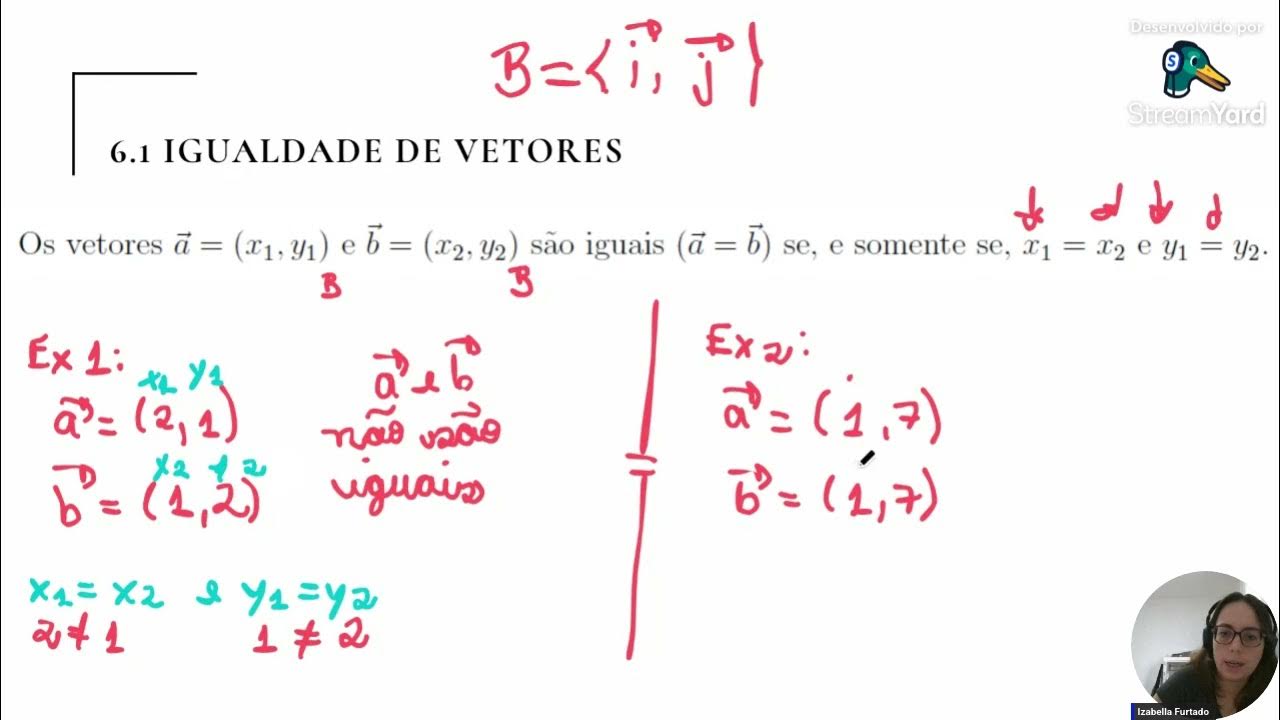Dimensi 3 - Kedudukan Titik, Garis dan Bidang dalam Ruang
Summary
TLDRThis video offers a clear and engaging explanation of geometric concepts in three-dimensional space. It covers the relationships between points, lines, and planes, including how they can intersect, be parallel, or coincide. Using examples from a cube with labeled vertices, the video walks viewers through how to understand the positioning of points on lines and planes, as well as how lines and planes relate to each other. The content is aimed at making complex geometric ideas simple and accessible for learners, encouraging interaction and sharing among viewers.
Takeaways
- 😀 A point can either lie on a line or be outside of it, depending on its position in space.
- 😀 A point can either be on a plane or outside of it, with only two possibilities: on the plane or outside it.
- 😀 Two lines can either intersect at a point, be parallel (with no intersection), or be coincident (overlap).
- 😀 The position of a line relative to a plane can be one of three possibilities: the line can lie on the plane, intersect the plane, or be parallel to it.
- 😀 Planes can either be parallel to each other, or they can intersect at a line.
- 😀 When two lines intersect at a point, they are said to be 'intersecting'. If they never meet, they are 'parallel'.
- 😀 The relationship between lines and planes can involve the line being parallel to the plane, intersecting it, or lying entirely on it.
- 😀 A plane can intersect with another plane at a line, or the two planes can be parallel.
- 😀 Examples using cubes help illustrate the positioning of points, lines, and planes in three-dimensional space, making the concepts easier to understand.
- 😀 This lesson covers basic three-dimensional geometry, focusing on understanding the positions of geometric elements relative to each other, such as points, lines, and planes.
Q & A
What does the term 'kedudukan titik' refer to in geometry?
-The term 'kedudukan titik' refers to the position of a point relative to other geometric objects, such as a line or a plane. It can describe whether the point lies on, outside, or intersects with these objects.
How can you determine the position of a point relative to a line?
-To determine the position of a point relative to a line, check if the point lies on the line. If it does, the point is considered 'on' the line. If it doesn’t, the point lies outside the line.
What are the two possible positions of a point relative to a plane?
-A point can either lie on the plane or be outside of it. If the point is located within the bounds of the plane, it is considered to be on the plane.
What is the difference between intersecting and parallel lines?
-Intersecting lines meet at a single point, forming an intersection. In contrast, parallel lines do not meet, no matter how far they are extended, as they maintain a constant distance from each other.
What does it mean for two lines to be coincident?
-Two lines are coincident when they overlap completely, essentially being the same line. They share all the same points and have no distinct separation.
What is meant by the position of a line relative to a plane?
-The position of a line relative to a plane can be one of three possibilities: the line can be on the plane, it can intersect the plane at a single point, or it can be parallel to the plane, never intersecting it.
How can you describe the position of a line relative to a plane if they intersect?
-If a line intersects a plane, it does so at exactly one point. This point is where the line and plane meet.
What does it mean for a line to be parallel to a plane?
-A line is parallel to a plane if it does not intersect the plane. The line remains a constant distance away from the plane and never touches it, no matter how far it is extended.
In the example with the cube, how are the positions of the lines within the cube described?
-In the example with the cube, the positions of various lines (like KL, MN, and KM) are analyzed to determine whether they are parallel, intersecting, or coincident based on their relative positions within the cube.
What is the significance of visual aids when studying the position of points, lines, and planes?
-Visual aids, such as diagrams and models, are extremely helpful for understanding the spatial relationships between points, lines, and planes. They provide a clear representation of the geometric concepts and make it easier to visualize complex relationships.
Outlines

此内容仅限付费用户访问。 请升级后访问。
立即升级Mindmap

此内容仅限付费用户访问。 请升级后访问。
立即升级Keywords

此内容仅限付费用户访问。 请升级后访问。
立即升级Highlights

此内容仅限付费用户访问。 请升级后访问。
立即升级Transcripts

此内容仅限付费用户访问。 请升级后访问。
立即升级5.0 / 5 (0 votes)






